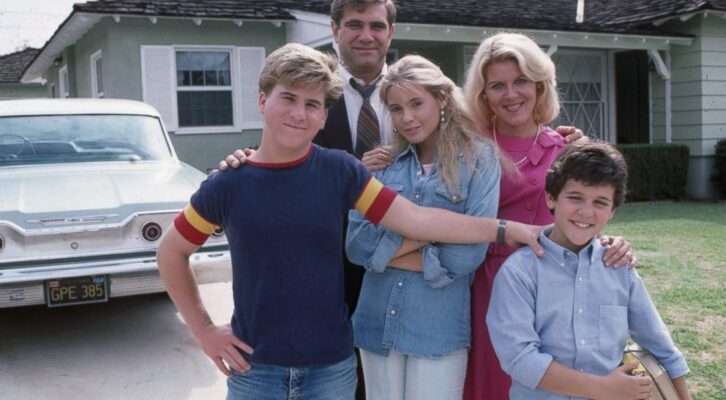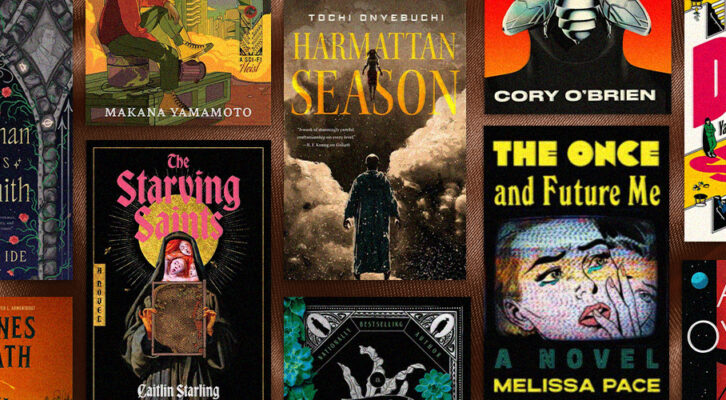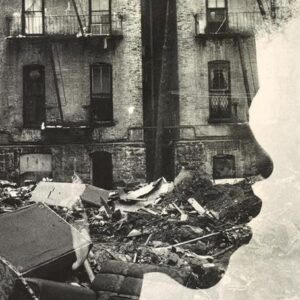
What Writing for The Wonder Years Taught Me About Novels
Mark B. Perry Celebrates the Quieter Freedoms of Fiction
My first episode of network television was viewed by more people than all of Shakespeare’s works in his lifetime. At least that’s what my agent claimed when the Nielsen Ratings came in.
I had written the 1989 season premiere of The Wonder Years and its viewership ranked just behind the likes of powerhouses 60 Minutes and Roseanne. Being hired onto a top-ten show right out of the gate was a heady way to launch my career after a lifetime of “practice writing” unsold stories, novellas, features, and teleplays.
I remained with The Wonder Years for three seasons, apprenticing under some of the best in the business, all while racking up seventeen writing credits. When reliving my adolescence grew stale, I moved on to the itinerate life of a TV writer, shapeshifting with each new gig to give voice to everything from teen dramas to police procedurals, lawyers, doctors, ghosts, and society sociopaths out for Revenge.
A great living to be sure, but all of those jobs were in service of other writers’ visions and I yearned for my own creative expression. Frustrated by this “always a bridesmaid, never a Ryan Murphy,” I decided to get serious about fiction.
My debut novel, And Introducing Dexter Gaines, is being published by Amble Press in May, and the experience feels like the literary equivalent of a TV pilot going to series. Before making the transition from action passages to prose paragraphs, I’d always viewed screenwriting and literature as two distinct disciplines, but as I dipped my toes in uncharted waters, I began to realize how much the boot camp of TV had given me years of on-the-job training in the essentials of storytelling—from plot and structure to character development and dialog.
As I dipped my toes in uncharted waters, I began to realize how much the boot camp of TV had given me years of on-the-job training in the essentials of storytelling—from plot and structure to character development and dialog.
Screenwriting is the art of describing the people, places, conversations, and events in your head to the scores of artists who bring make believe to life with a verisimilitude approaching reality. It requires economy of language, the industry’s conventional wisdom challenging you to describe action in three sentence bursts and tell your story within so many pages.
Network television is a conveyor belt that doesn’t stop. A twenty-two-episode network order is a hungry machine, with each script in various overlapping stages—pitching, plotting, outlining, writing, revising, pre-production, shooting, and post-production.
The writer assigned to a script will generally be required first to generate a one-page synopsis for network and studio approval, then a full outline describing every scene and act break, followed by a first draft and all the subsequent revisions that pop up during production. It’s “lather, rinse, repeat” until the season or series finale is “in the can” and, if you’re lucky, you get a month in Maui before starting up again.
As a newbie on Wonder Years, I first heard the term “breaking story” as it applies to working out the individual beats and scenes of an episode. It’s generally a collaborative job, with most shows operating on the classic writers’ room model where the staff gathers each day to brainstorm series-long arcs and plot out each episode scene by scene using white boards and index cards, with the showrunner having final say. It’s the process by which the story takes shape, plot and character reveals are planted, and conflict, complications, and twists discovered.
Early on, my mentor taught me the mantra “pitch without shame.” In the room, you never know when an idea—however half-baked—might spark a bigger, better one. It’s a process not unlike improv where the best ideas end up on the board. A carefully curated room full of writers working toward the common goal of making good television is an efficient tool.
It’s also a great place to learn useful skills like juggling Koosh balls and shooting rubber bands with laser precision. I was spoiled by this collaborative process, and felt very much alone when I first wrote “Chapter One” instead of “Fade In.” I had to learn to spitball with myself, sometimes facilitated by juggling Koosh balls or shooting rubber bands (old habits).
Still, an unexpected bonus came with the realization I was now my own showrunner, studio, and network with absolute final say in the room in my head—at least until I handed my pages over to trusted friends, a good editor, beta readers, and my publisher.
The epiphany I had early in the process, one that in retrospect now seems baldly obvious, was the realization that writing screenplays and fiction weren’t all that different, I still had to describe the people, places, and events in my head, but now the directors, producers, actors, and other talented production folks were replaced by one person: the reader. So the challenge was to feed their imaginations with words vivid enough to conjure an entire movie in their head.
The autonomy of authorship allowed me to approach my novel differently, choosing to work out the rough beats and overall shape of the book before diving in, then discovering and embracing unanticipated twists and revelations as I went.
My years of writing television proved enormously helpful when it came to plotting and pacing. The Wonder Years had only two acts, so your story, characters, and conflict had to be set up and complicated in Act One, then escalate and resolve in Act Two, all within about twenty-eight pages. When I segued to writing dramas, my two act comfort zone was now challenged by the classic four act structure, meaning I had to train a whole new set of muscles.
Then, in the late ’90s/early 2000s, some networks began mandating more breaks so they could sell more commercials. The challenge was to build genuine stakes at the end of each act to keep the viewer hooked through all those Prevagen and Liberty Mutual ads.
As writers, we adapted, but only begrudgingly and after incessant complaining. Premium streaming services have eliminated the act breaks entirely, but if you watch carefully, you’ll see most episodes still follow the basic four, five, or six act structure.
After my decades-long master class in all those writers’ rooms, I began to see my novel like a limited run TV series, with each chapter an episode, and I was able to apply the basic tenets of screenwriting to fiction. For the reader/viewer, staying up late with a book or to binge-watch a series are pretty similar experiences—storytelling is storytelling—and whether you’re working with chapter or commercial breaks, your goal is to leave your audience craving “just one more” as you build to a satisfying The End or Fade Out.
Whether in film or books, your characters are key to your story’s success. These fictional people need to be fascinating enough to keep the viewer/reader engaged, whether rooting for or against.
One advantage in television is seeing your characters come alive in the form of the actors who embody them and bring unique nuances that may never have occurred to you. There’s a luxury in tailoring a character to the actor, even more so when the show runs long enough to watch their sometimes surprising evolution. The writer/actor relationship becomes another collaboration.
In writing my novel, one of the most surprising discoveries was watching my fictional characters take on a life of their own, so much that they led me to a more satisfying conclusion for the novel.
Fiction liberates you from TV’s overcrowded kitchen. I’ve loved almost all of the directors I’ve worked with over the years, but clashed with others who didn’t share my vision.
Producers tasked with budgeting would force me to cut sequences I loved and find a way to tell the story without them. Some actors would change or refuse to say dialog I’d lost sleep perfecting.
Fiction is so much quieter. The only second-guessing is your own, and if you’re like me, you’re already used to that. As I crafted my sentences, I pitched without shame to myself, always in search of a better idea.
The TV constraints of time and money vanished (especially the money!), replaced with the freedom to have the characters do and say whatever and go wherever my imagination could lead. I could forget the shorthand of screenplay style and describe my world in as much detail as I could envision, knowing more words wouldn’t translate into budget overages, all while keeping economy in mind.
Writing for television meant I had to hew close to an approved outline, a process that often felt like the literary version of paint by numbers. The autonomy of authorship allowed me to approach my novel differently, choosing to work out the rough beats and overall shape of the book before diving in, then discovering and embracing unanticipated twists and revelations as I went.
There’s some debate over who coined the phrase, “I hate writing; I love having written.” The satisfaction of finishing a teleplay and seeing it brought to life is an instant gratification made possible only by an enormous team of other artists.
With books, there’s something transcendent in knowing—for better or not—you did it mostly on your own. And now that I’ve written both, I can honestly say I still love screenwriting, but I’m in love with fiction.
______________________________

And Introducing Dexter Gaines: A Novel of Old Hollywood by Mark B. Perry is available from Amble Press.
Mark B. Perry
Mark B. Perry is an Emmy, Golden Globe, and GLAAD Award-winning writer and producer whose credits include The Wonder Years (1988), Law & Order, Party of Five, and Revenge. His debut novel, And Introducing Dexter Gaines: A Novel of Old Hollywood, is forthcoming from Amble Press in May 2025.



















